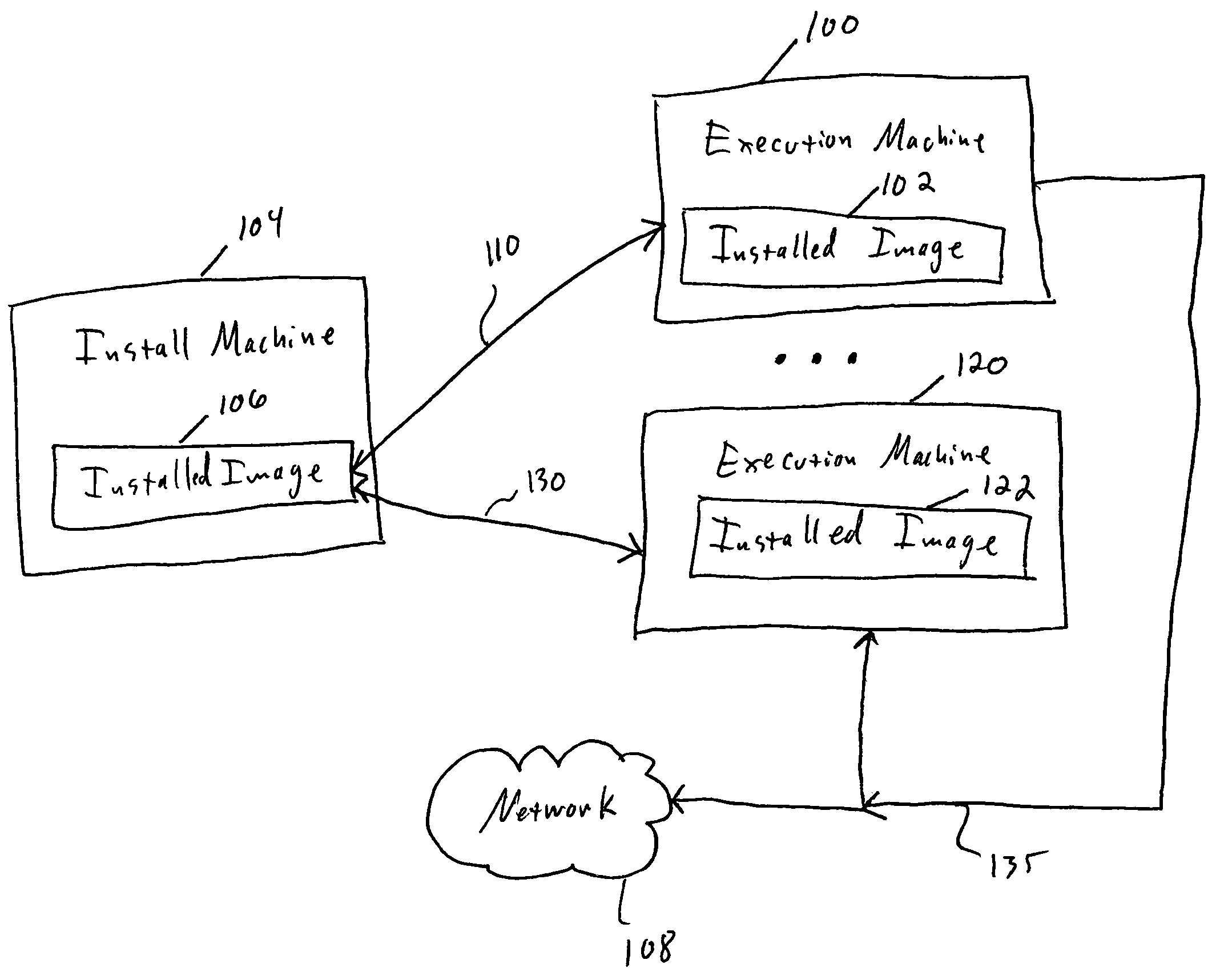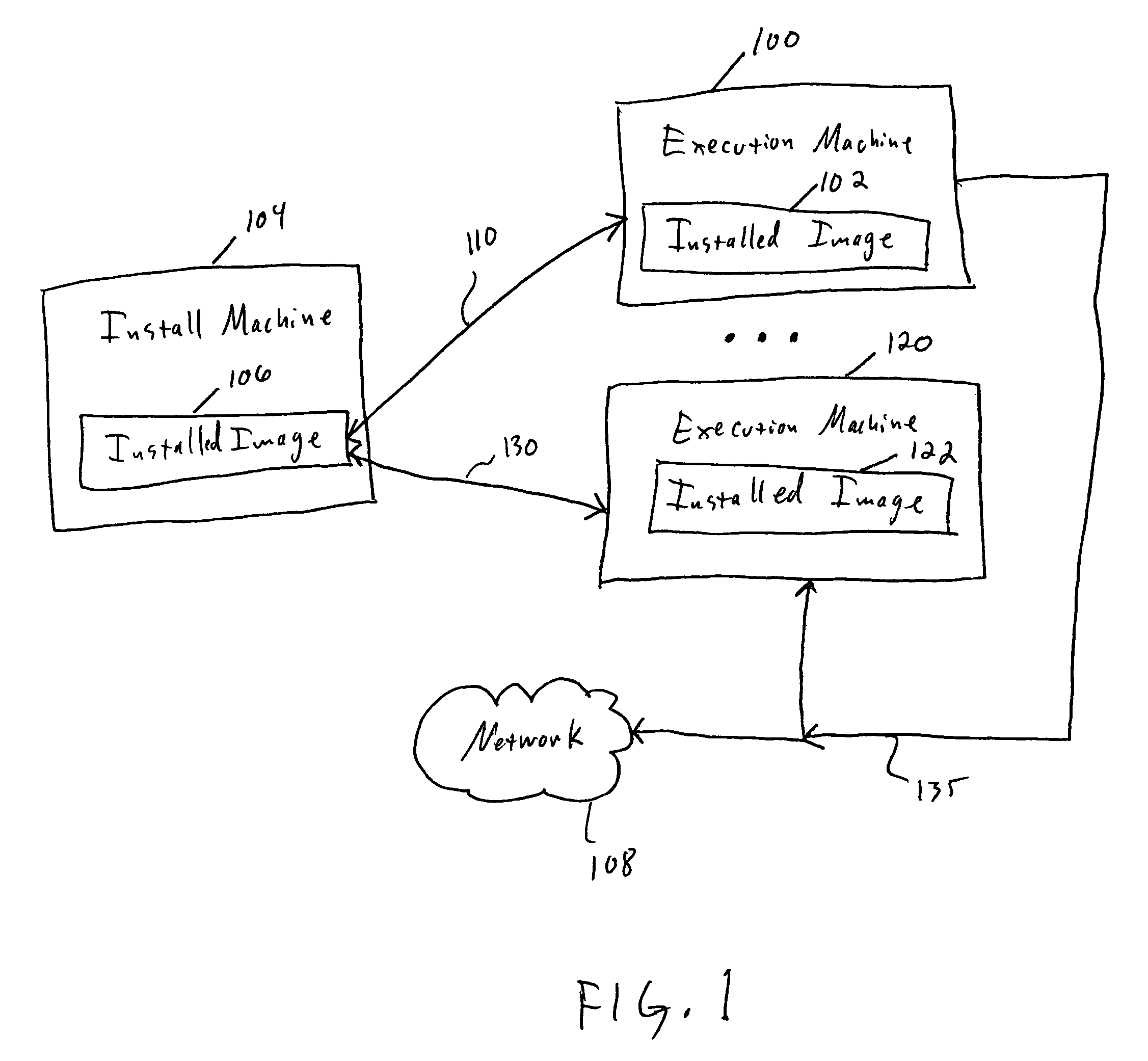Method and apparatus for simplifying the deployment and serviceability of commercial software environments
a technology of commercial software and deployment methods, applied in the direction of unauthorized memory use protection, instruments, television systems, etc., can solve the problems of complex software environments such as these, difficult and expensive installation, maintenance and support of large software systems, and difficult to keep all installed applications on the system up to date, so as to eliminate redundancy in components
- Summary
- Abstract
- Description
- Claims
- Application Information
AI Technical Summary
Benefits of technology
Problems solved by technology
Method used
Image
Examples
Embodiment Construction
[0035]The present invention uses a hierarchical selective virtualization approach in which multiple semantic levels of an application are simultaneously virtualized for purposes of allowing the application to execute on a host execution machine. Semantic level refers to a nested virtual runtime environment for a programming model that is different from the host environment's programming model. Thus, for a Java application, there are two semantic levels, the “base level” which is the JVM code itself, written for the native platform, and the Java code running in the JVM's virtual runtime environment written for the Java platform. A virtualizer, as used herein, refers to a program or routine that emulates an aspect of a native environment for an installed image of an application. In one example, in the case of a Java application, two hierarchical virtualizers are present. One virtualizer selectively virtualizes the OS interfaces used by the native modules of the application, while the ...
PUM
 Login to View More
Login to View More Abstract
Description
Claims
Application Information
 Login to View More
Login to View More - R&D
- Intellectual Property
- Life Sciences
- Materials
- Tech Scout
- Unparalleled Data Quality
- Higher Quality Content
- 60% Fewer Hallucinations
Browse by: Latest US Patents, China's latest patents, Technical Efficacy Thesaurus, Application Domain, Technology Topic, Popular Technical Reports.
© 2025 PatSnap. All rights reserved.Legal|Privacy policy|Modern Slavery Act Transparency Statement|Sitemap|About US| Contact US: help@patsnap.com



